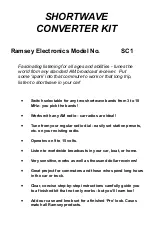
13
The fuel system for the generating set must be
capable of delivering a clean and continuous
supply of fuel to the engine. For most installations
this will include a small day tank, a bulk storage
tank and fuel lines.
4.9 FUEL SYSTEM
4.9.1 Day tank:
Day tanks provide a readily
available supply of fuel directly to the generating
set and should therefore be located within the
generator room. The baseframe is designed to
contain a day tank up to 650 kVA.
Do not smoke or allow sparks, flames or other
sources of ignition around fuel. Fuel vapours and
oil vapours are explosive.
For stationary generating
sets with remote fuel
storage systems, make sure
such systems are installed
in compliance with relevant
Codes, Standards or other
requirements.
WARNING:
4.9.2 Bulk Storage Tanks:
For extended
operation. a separate bulk fuel storage tank is
required. The bulk tank should generally be
located outside the building where it will be
convenient for refilling, cleaning and for
inspection. It should not, however, be exposed
to freezing weather because fuel flow will be
restricted as viscosity increases. The tank may
be located either above or below ground.
A vent must be installed on the bulk tank to
relieve the air pressure created by filling the
tank or created by evaporation and expansion.
It will also prevent a vacuum as the fuel is
consumed. The base of the tank should have a
slope, so the water and the sediment can be
collected. A sludge drain valve should be installed
at the low point to allow removal of water and
sediment on a regular basis.
4.9.3 Fuel Lines:
The fuel lines can be of any
fuel compatible material such as steel pipe or
flexible hoses that will tolerate environmental
conditions.
Flexible piping should be used to connect to the
engine to avoid damage or leaks caused by engine
vibration.
The fuel delivery line should pick up ful from a
point no lower than 50 mm (2) from the bottom
at the high end of the tank (away from the drain
plug).
















































